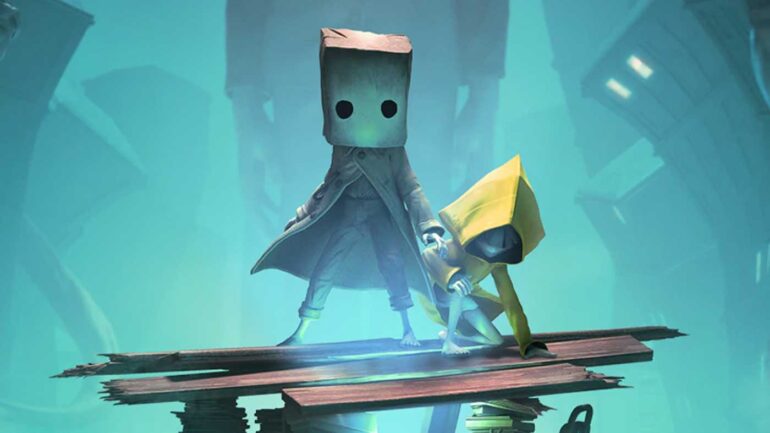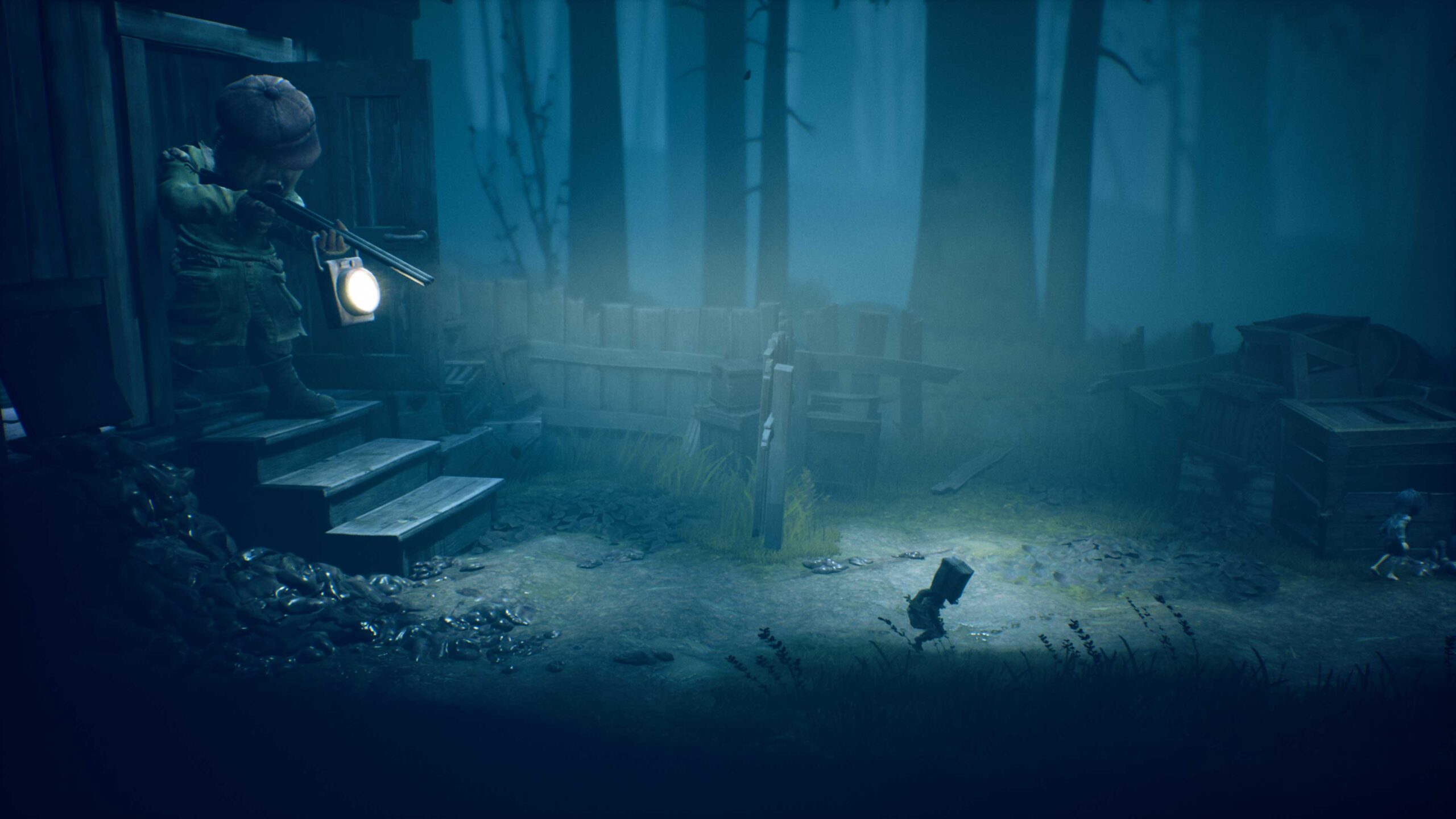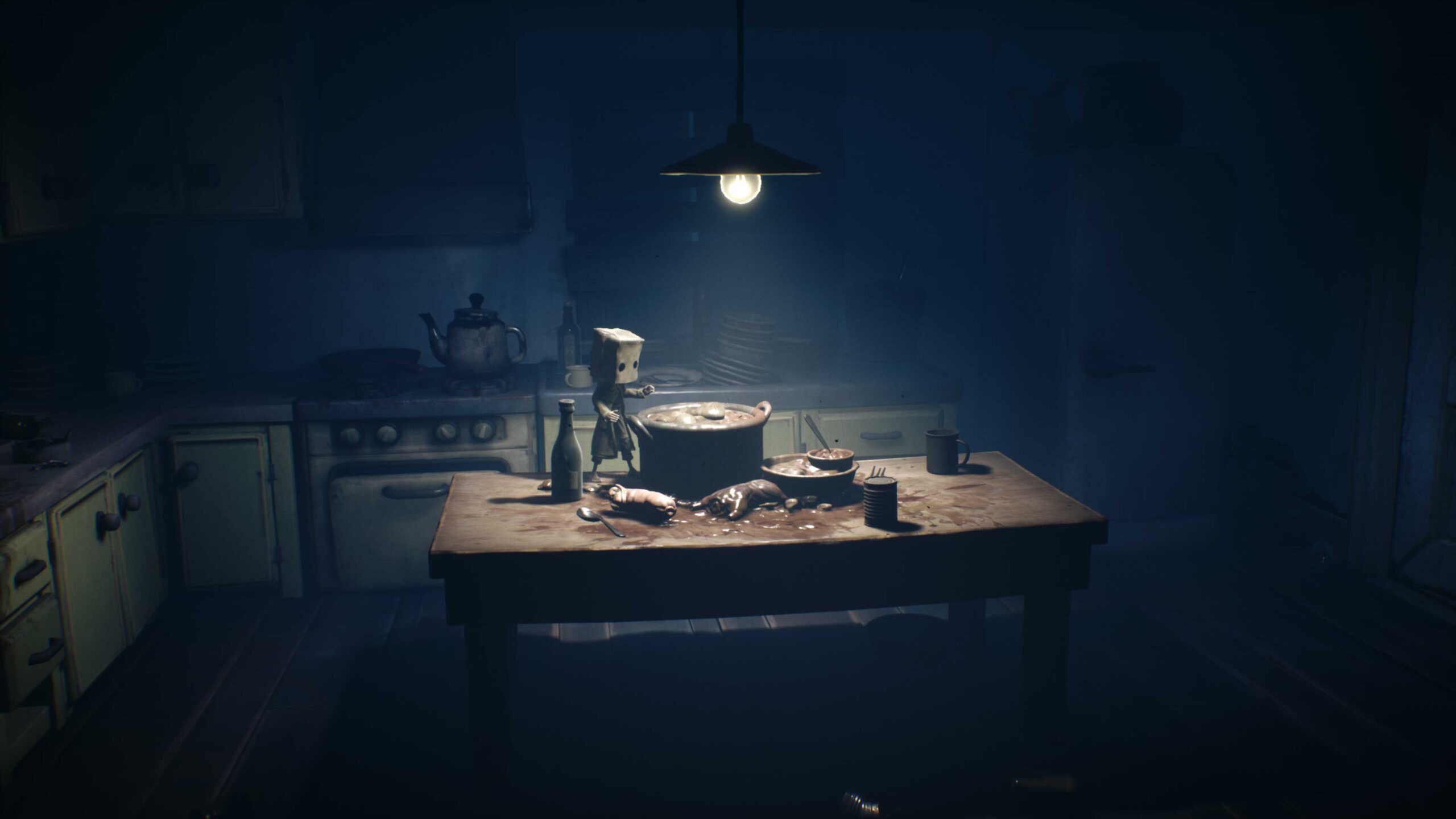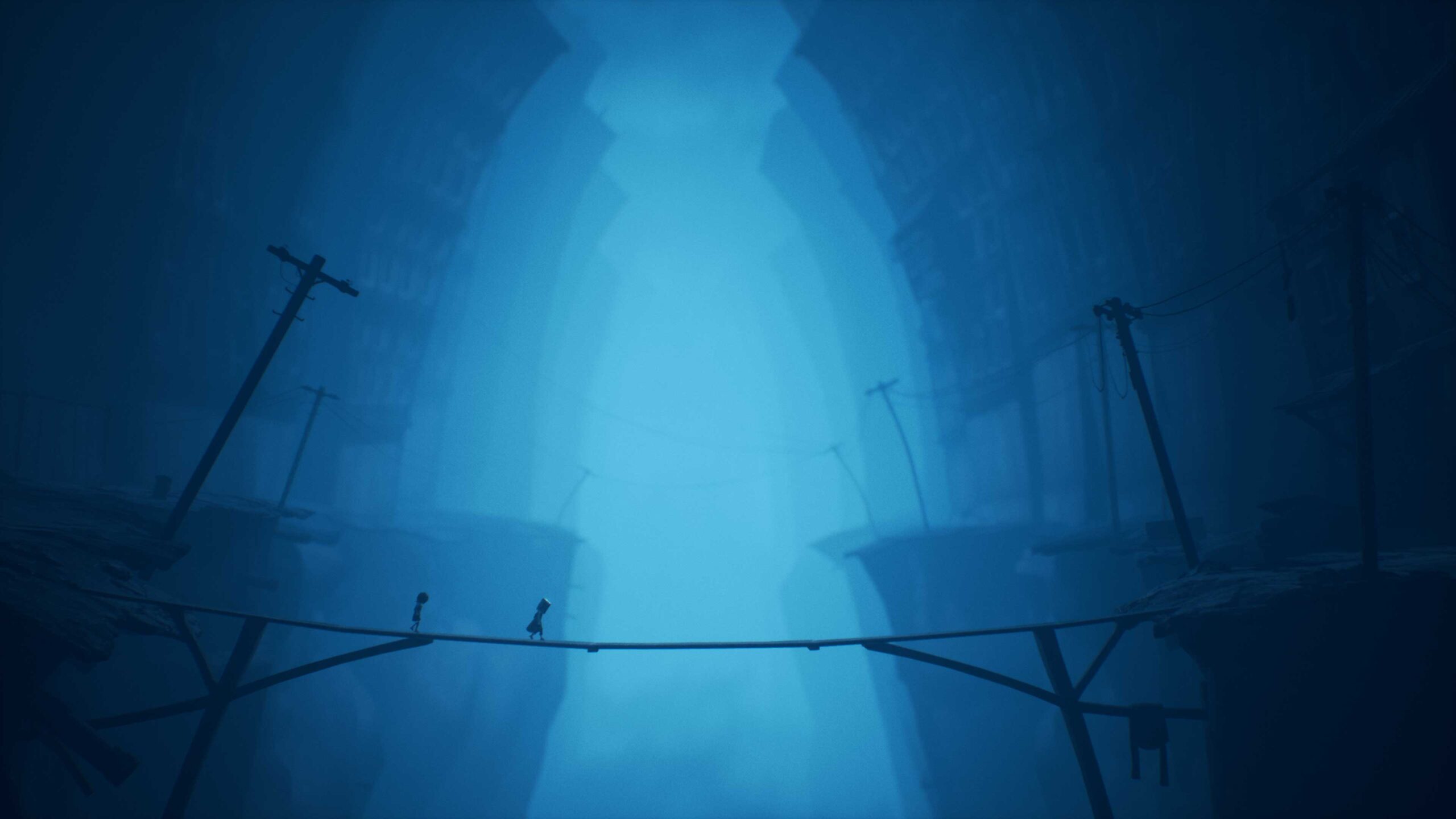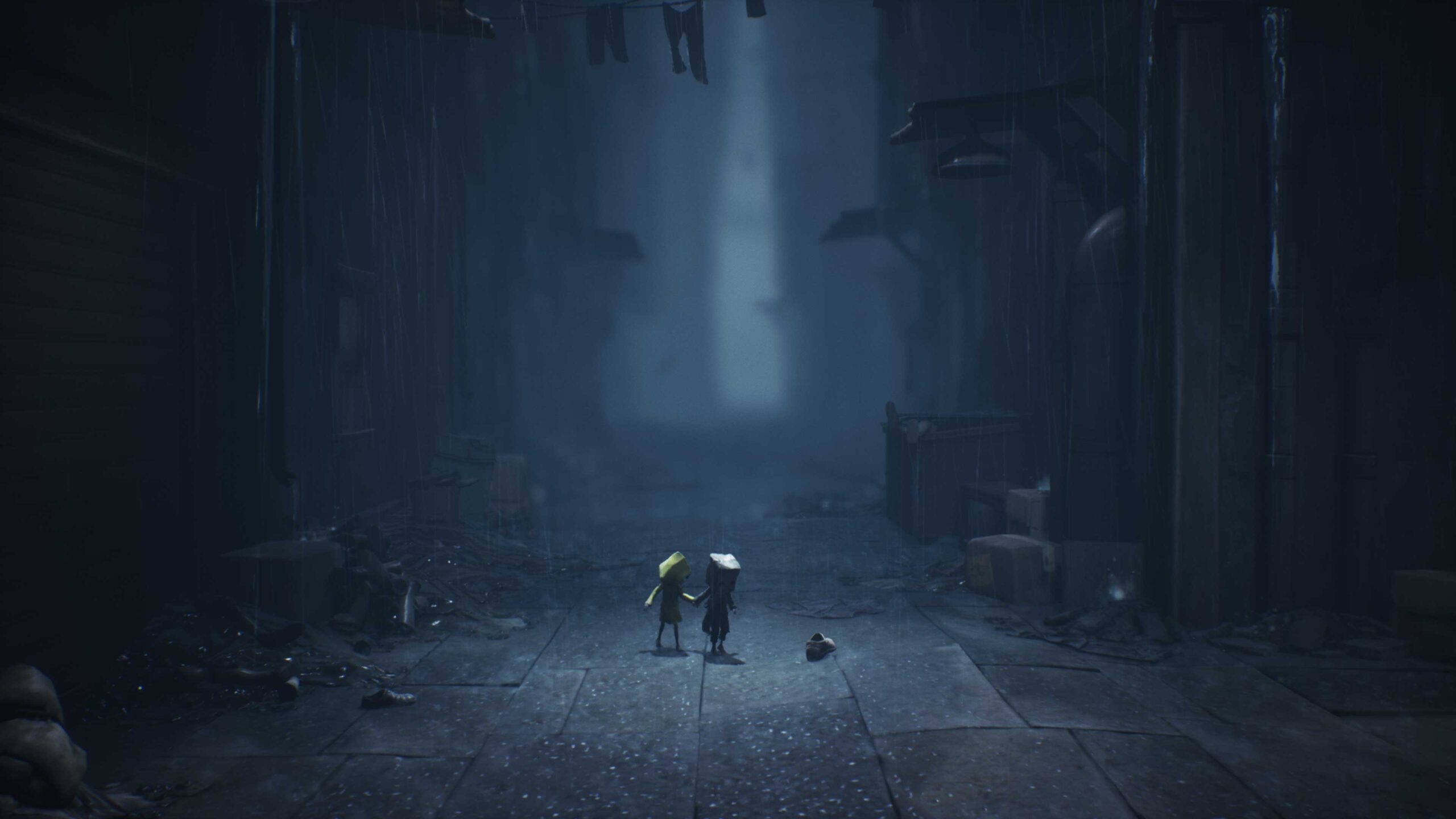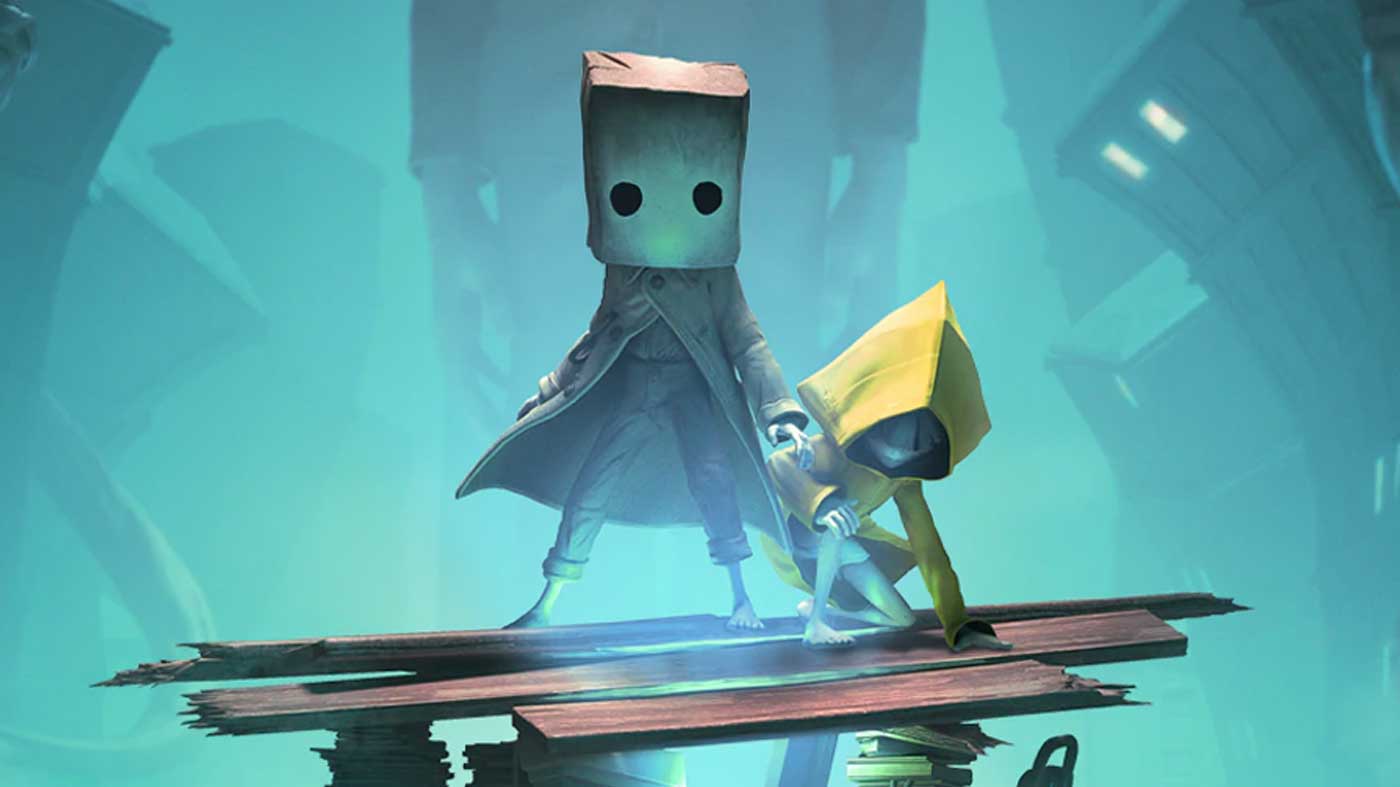When Little Nightmares hit consoles four years ago, I was intrigued by the premise. A small girl tries to escape from an abhorrent operation on a gigantic ship out of her element. It was a pleasant experience, though I felt the concept could be expanded a little, especially given where the game ends. Four years later, Little Nightmares II still isn’t overly scary, but the team at Tarsier have done their best to diversify the gameplay in many ways.
Little Nightmares II has you playing as Mono, a young boy who sheepishly wears a paper bag over his head. It’s adorable. Mono wakes up in the middle of a forest, unsure how he got there, though he knows that he doesn’t want to stay there. Mono meets up with and rescues a young girl named Six during his escape from a macabre hunter. Being the protagonist from the original game, Six helps Mono escape before investigating the Signal Tower. But why? Mono has strange reactions to the signal and hopes that whatever dark secret he uncovers there will help him learn more about who he is and why he’s where he is.
Or at least that’s what I interpreted from the plot of Little Nightmares II. Much like the first game, a lot of the story telling is implicit rather than outwardly explained. I commend Tarsier for sticking to their guns here. Less is more in almost every situation, and Little Nightmares II is no exception. From beginning to end, the plot is engaging and intriguing enough to invite you to piece it all together while the credits roll. It’s dark, it’s depressing, but it’s compelling.
But just what is Little Nightmares II? It’s a sequel to the original game, but you could easily play and enjoy it without having played the original either. Much like the original, it’s a mixture of stealth and puzzles presented from a unique perspective to frame every shot as a twisted looking dollhouse. Mono and Six are both children in this big world, so the world and objects all appear oversized. Many of the puzzles are designed around negotiating this fact.
From the get-go, it’s hard to deny that Little Nightmares II is doing an earnest job trying to one-up itself in every aspect. The setting has been expanded from a single ship to an entire city. The puzzles are more varied than ever, and there are even some light combat elements in play. It feels like a sequel in every sense of the word. I commend Tarsier for being smart enough to include combat and balance these different aspects of the gameplay so that none of them ever get old.
The gameplay’s crux involves entering a room, working out what can be interacted with, and then using said interactions to move on to the next room. The puzzles themselves are great – they’re subtle and gently guide you in the right direction and, of course, give a great sense of accomplishment when you finish them. Six is with you for most of your journey, and she tends to act as a pointer for what you need to do next, so if you’re completely lost, there are subtle cues you can look out for to make it through.
Six is one of the significant changes to Little Nightmares II’s formula, acting as a buddy of sorts to Mono. Entirely controlled by the game and not the player, she can point out objects of interest and help Mono do specific tasks that might require two people. Having a second character around means there is excellent potential to improve the puzzles too. Thankfully, developer Tarsier has capitalised on that opportunity immensely. Though Six is useful in most situations, I did run into a few issues where she’d freeze entirely and not respond to commands.
Nothing a checkpoint load didn’t fix, but still a niggle worth mentioning.
But for all the fantastically designed puzzles and the nuanced implementation of combat and self-defense, there’s one glaring issue with Little Nightmares II. It’s absolutely bogged down in trial-and-error design. So often, I’d step into a new room and be met with instant death. My death itself being the only way I’d know to avoid it on my next attempt. Some instances of these are telegraphed well, others not so much. It seems a little frustrating, though, to Little Nightmares II’s credit, there are many checkpoints to alleviate the frustration. Perhaps that in and of itself is admission to how frustrating the experience can be.
This isn’t any more evident than during the encounters with the major enemies of each section. They’re creepy, make no mistakes, but the encounters with most of the “boss” characters tend to be an intense chase sequence. The tension is high, you’ll inevitably die, and then you respawn at a checkpoint. There’s not much consequence to losing, and these moments quickly go from being tense and exciting to repetitive and annoying.
Being priced rather modestly, you can expect Little Nightmares II to last around the same amount of time as the first game. The first game took me about four hours to finish, whereas the second game took me about five or six. Keep in mind I am a bit of a slower player – I took my time to explore (to find collectibles, including adorable hats for Mono), but this is the same length as Little Nightmares but with more variety, and that’s hardly a bad thing.
Much like the original game, the presentation is one of Little Nightmare II’s strong suits. If you’ve played the first, you know what to expect. A dark and ominous world that is not only oppressive but also bleak. The whole world is clearly built for people that are bigger than you, too, making it feel not only intimidating but uninviting. The denizens of this strange world are wonderfully designed, looking like something of a nightmarish perversion of an illustration in a Roald Dahl story. The lighting is dim but perfect, and the atmosphere thick. If it’s not already obvious – Little Nightmares II is a visually strong game. Such strong imagery is only augmented by a well matched, minimalist original score.
THE XBOX ONE VERSION OF THIS GAME WAS PLAYED ON AN XBOX SERIES X FOR THE PURPOSE OF THIS REVIEW. A DIGITAL REVIEW CODE WAS PROVIDED BY THE PUBLISHER.


